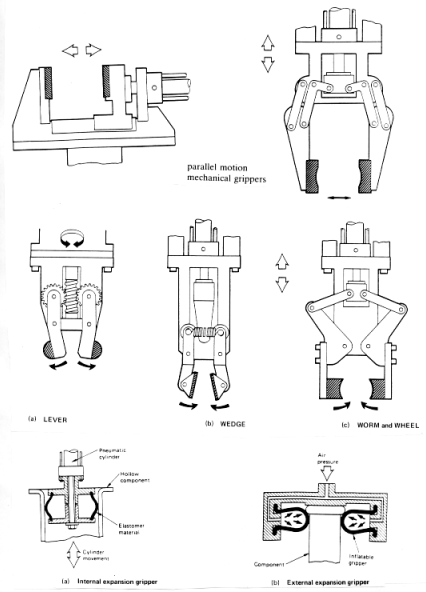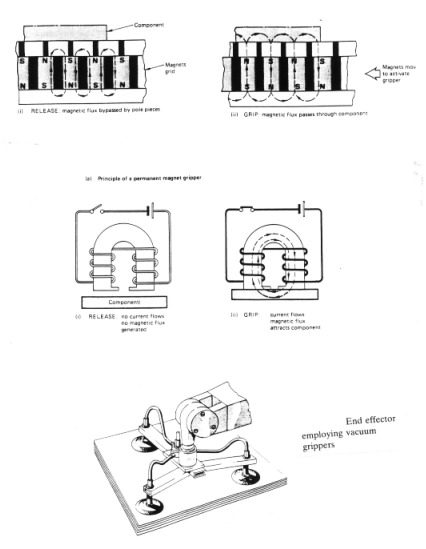End Effector Design
Although end effectors can be thought of in terms of the human hand, end effector
design can in many cases be far superior to the human hand eg.
They can:
- Handle cargo by other means than mechanical gripping
- Offer superior gripping power to deal with heavy cargos.
- Be made resistant to hot, corrosive, electrically live, or sharp cargo.
- Be made resistant to hostile environments eg. chemical baths,
radioactive chambers, furnaces etc.
- Be changed to suit different tasks.
The ideal end effector should exhibit certain desirable characteristics in its design
however practical limitations often force a compromise, points to remember in design
are that end effectors should;
- Be as lightweight as possible to increase payload.
- Be as small as possible to maximise access within the working
envelope
- Be as rigid as possible to maintain accuracy and repeatability.
- Be safe in there operation.
- Be available at reasonable cost.

Types of End Effector
End effectors may be broadly classified as grippers, tools or sensors depending on the
intended purpose.
Grippers represent the majority of end effector types, they are able to grasp,
manipulate, transport and position a load.
The following are just a few examples of the different types of grippers.






